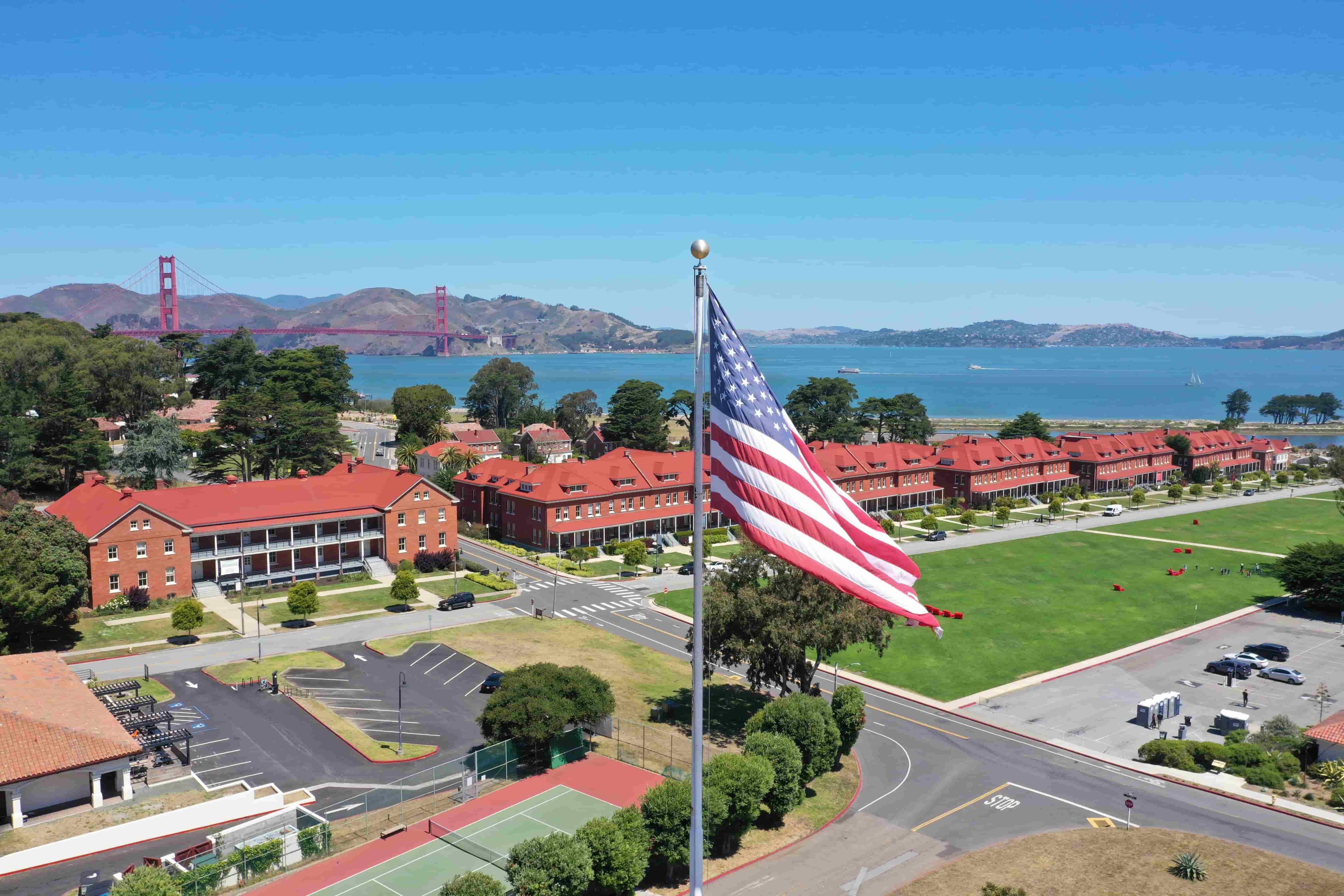The Presidio's Dr. Delehanty Goes to Washington
Presidio of San Francisco (January 16, 2009) –What exactly do you do when you walk up the long, curved sidewalk to the front door of the most famous house in the nation? Do you knock? Just walk in? It can be quite an awe-inspiring experience. “I wasn’t even sure I should push the door open!” Presidio historian Dr. Randolph Delehanty admits with a chuckle.
Delehanty, whose regular gig is creating public events and programs celebrating the former military post’s history for the Presidio Trust, was in Washington, D.C., researching an article on the history of the White House for Museum magazine. In anticipation of the inauguration, he had been asked in November by the American Association of Museums to write the piece, and leapt at the opportunity. He calls the experience one of the high points of his professional life. “It is quite an honor really,” Delehanty says. “For me personally, and for the Trust too.”
His two-week crash course included volumes of reading, an interview with the head of the White House historical society, and a lengthy tour of the building with the White House curator. “I had no idea how complex the history of the house and its management is. There’s so much more to it than Jacqueline Kennedy redecorating the formal rooms in the 1960s.”
The author of 14 books, Delehanty has written extensively about urban and architectural history. To him, buildings are not just architectural monuments, they’re windows into social history, none more so than the White House. “The White House is never static. It’s the same building but it has evolved over time with different occupants and with social and political changes as well. I think that’s why I was asked to write this article, because of my interest in the human side of things.”
That interest in the human side of things is on display, literally, in the Presidio’s current exhibit, War and Dissent: The U.S. in the Philippines 1898-1915. Like much of Delehanty’s work, this exhibit grew out of one small seed: in this case the diary of a soldier who had trained at the Presidio. From that single diary, Delehanty crafted an exhibit of nine themed galleries featuring San Francisco monuments, diaries, letters, and political cartoons that traces the rise of the Presidio into a major military installation and the growth of the United States into an imperial power. Delehanty calls War and Dissent one of the Presidio’s most ambitious historical exhibits.
Delehanty’s relationship with the Presidio goes back some 40 years, when he visited a cousin who was an intern at Letterman Hospital. He has been with the Presidio Trust since 2000. He is quick to draw parallels between his White House work and his work at the national park.
“I’ve often said that the interpretation of a place or a building is like describing a snail through its shell. We see the shell, and it outlasts the snail, but we only understand the shell when we understand it as evidence of the life of the snail that created it. To me, historical sites, including the White House and the Presidio, are evidence of human life. It is both challenging and rewarding to imagine the life that created the world we live in and how we add to that world through our own lives and understanding.”
Dr. Delehanty’s article is featured in the January/February issue of Museum magazine. (American Association of Museum’s website is http://www.aam-us.org/index.cfm)
The Presidio Trust was established by the United States Congress in 1996 to oversee the Presidio of San Francisco, an urban national park located at the base of the Golden Gate Bridge. The 1,500-acre site contains expansive open space and spectacular views, a 300-acre historic forest, and rare and endangered plants and wildlife. It also comprises nearly 6 million square feet of buildings, including 469 historic structures that contribute to its status as a National Historic Landmark District.
